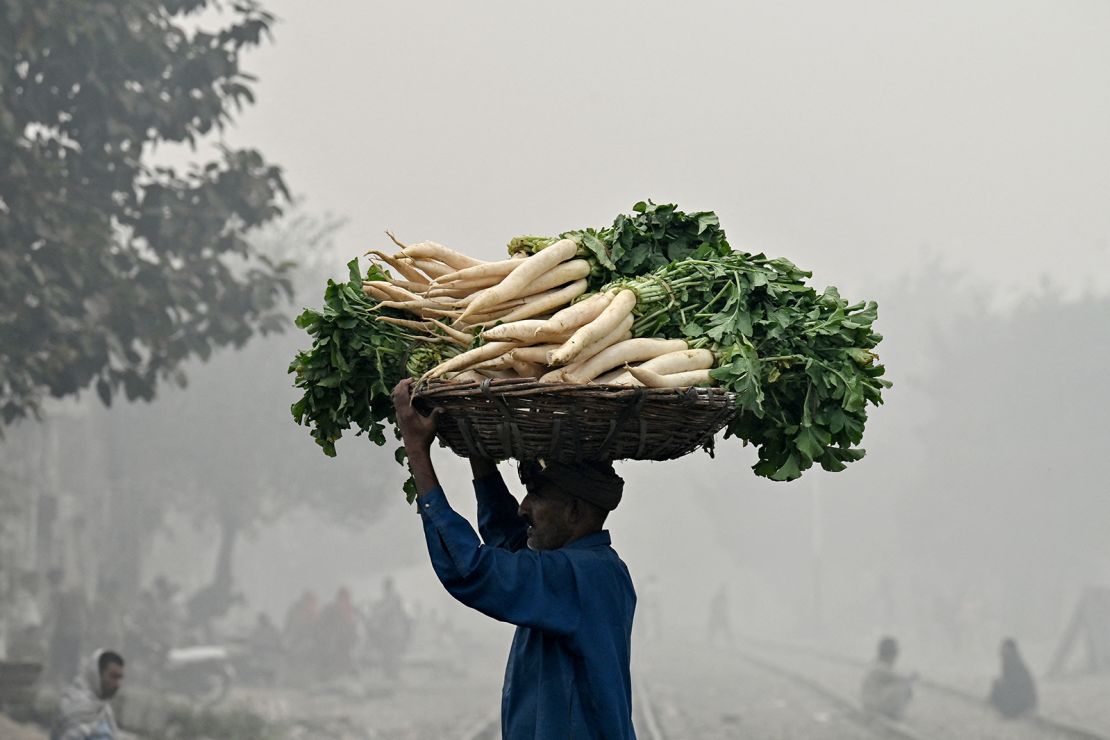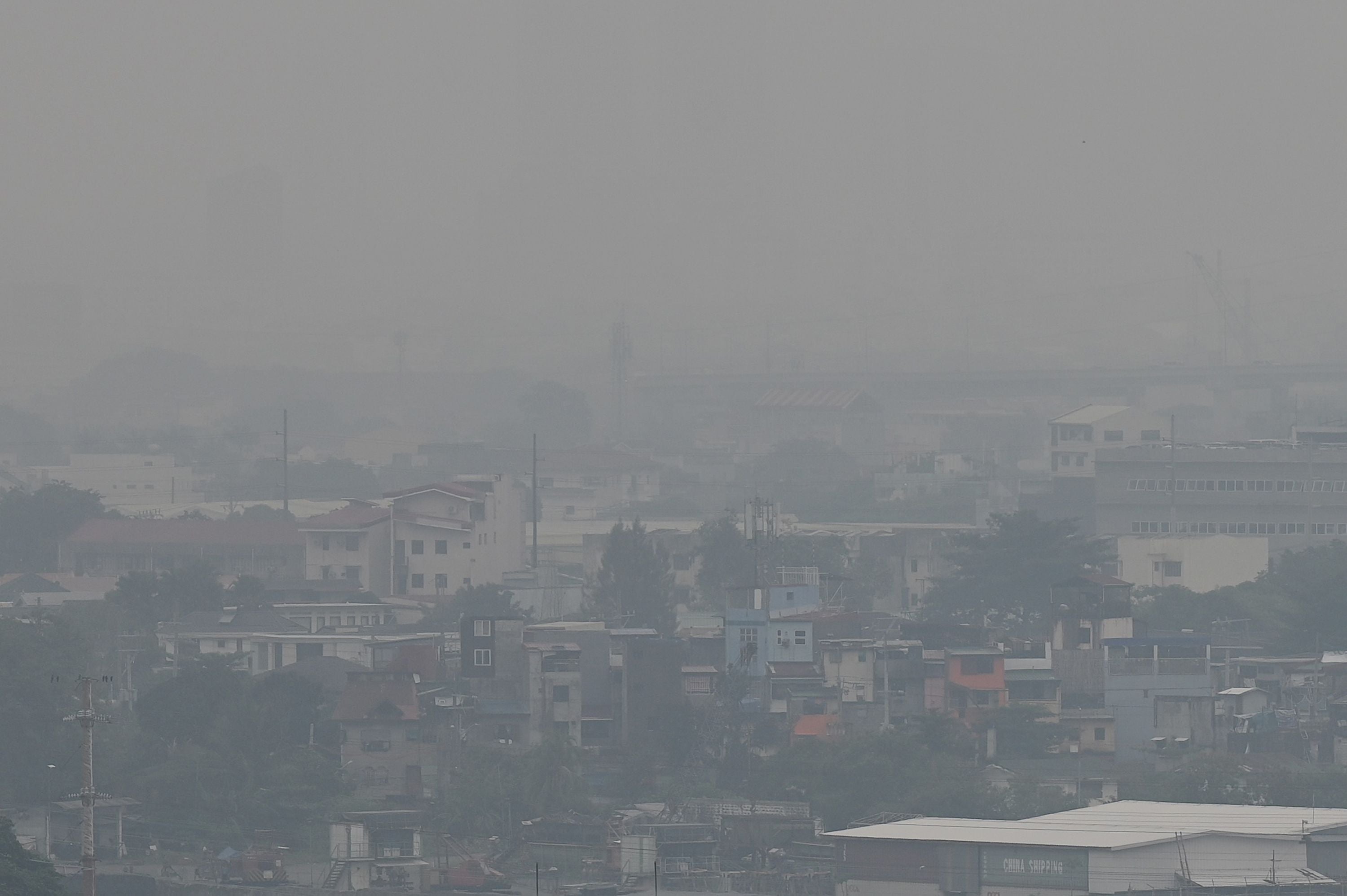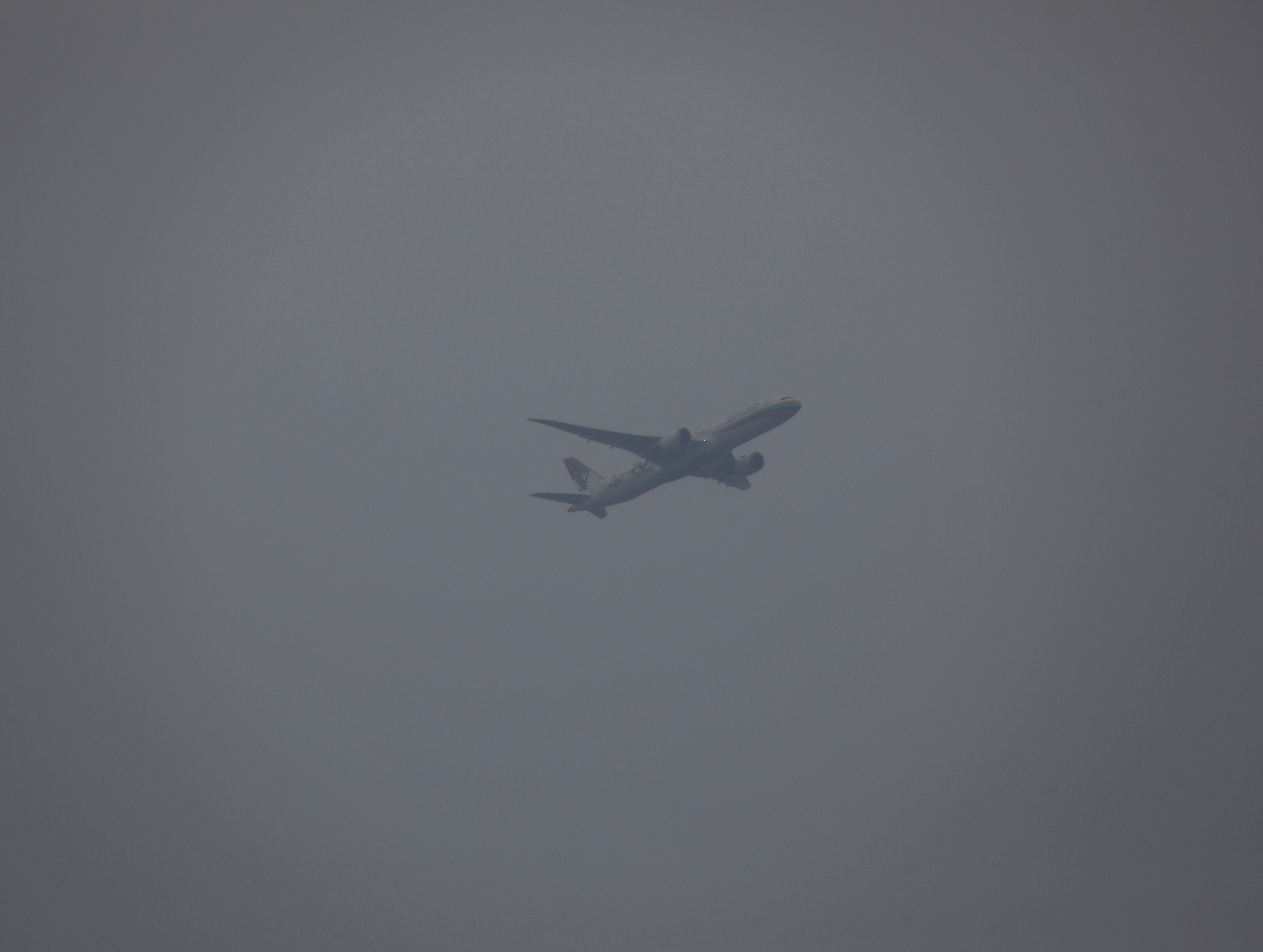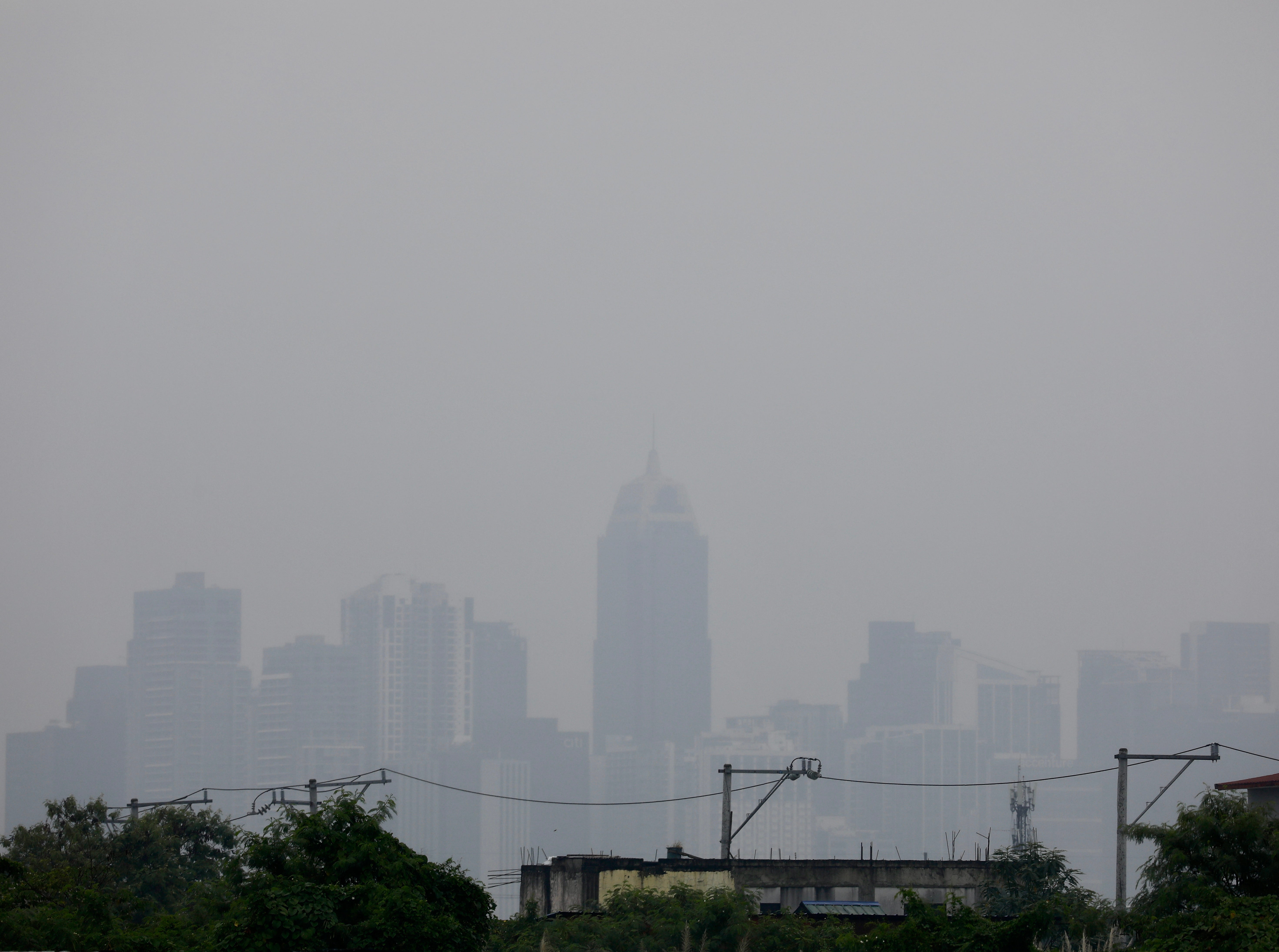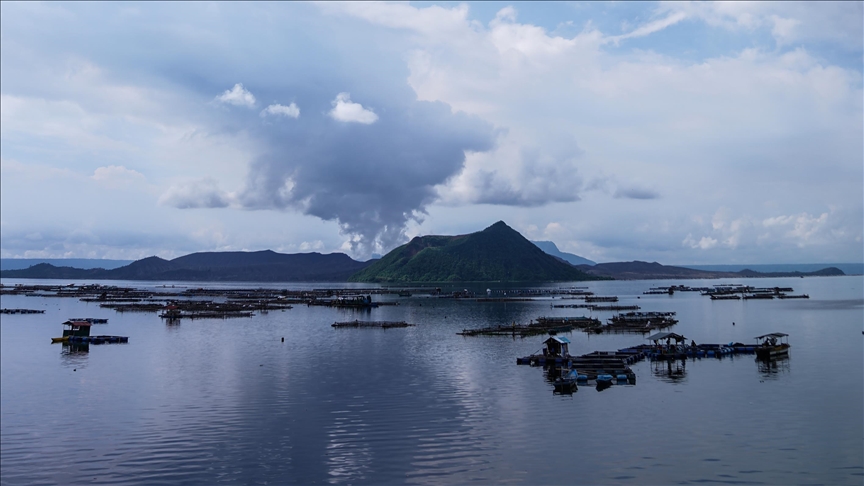
Lahore was once known for its gardens.
• Hazardous environment forcing Lahoris to alter their lifestyles
• Experts say dearth of accurate data means govt actions fail to adequately address issue
A MORNING walk in Model Town Park is part of Hassan Ali’s daily routine. It includes three laps of the park’s 2.5km jogging track.
His body has become accustomed to this, and he never used to “face any difficulty” during the walk.
Then, toxic smog started enveloping Lahore, and air pollution started rising beyond hazardous levels.
Now, his doctor has advised him to cut short his walk, a suggestion Mr Ali is only too happy to follow.

He is one of Lahore’s more than 13 million citizens forced to alter their lifestyles due to smog, which has become a recurring issue in the city.
As winter approaches, the air quality starts deteriorating as denser cold air traps pollutants from vehicle and factory emissions.
On Saturday, the air pollution in the city soared, with the Air Quality Index (AQI) briefly reaching an “unprecedented” level of over 1,000.
The reading of 1,067 between 8am and 9am was 71.1 times above the World Health Organisation standard.

‘Life-altering’ impact
The smog has reportedly affected millions, leaving them with symptoms such as cough, difficulties in breathing, eye irritation and headaches.
Arif Hussain, a human rights activist, says two of his children, aged between seven and 10, have developed skin conditions and are on medication to cope with the adverse effects of smog.
Similar complaints were made by Sufiyan Asif, a teenager, who says he and his younger brother have developed sore throat and eye irritation due to smog.
His family is staying indoors and keeping windows and doors shut to avoid exposure to smog.
Experts have raised alarm over the deteriorating air quality in the city, which they claim leads to life-altering problems like depression and impacts the growth of the children.
Renowned physician Dr Javed Akram agrees that smog is resulting in serious health issues among children and the elderly.
Choking in the city of gardens
Lahore was once known for its gardens. Now, its claim to fame is topping the pollution charts.
The causes of this are well-known and amply documented. The mushroom growth of housing societies is eating up green spaces in and around the city; industries and brick kilns whose emissions violate every environmental protection law; stubble burning and increasing numbers of vehicles on the roads, all contribute to the toxic air.
But the tragedy is that accurate data on these phenomena is found nowhere.
The government claims similar issues in neighbouring Indian Punjab also contribute to the choking air quality.
Punjab Environment Protection and Climate Change Department (EPCCD) Secretary Raja Jahangir Anwar says there are 4.5m motorcycles, 1.3m cars and trucks in Lahore.
In addition, there are 6,800 factories and 1,200 brick kilns operating in and around the city, and farmers are burning stubble in the adjoining Kasur, Sheikhupura, Nankana and Gujranwala districts, he tells Dawn, blaming their emissions for the hazardous air quality.
Successive governments have tried everything to counter smog — from spraying water on roads to artificial rain and, most recently, imposing a ‘green lockdown’.
However, in the absence of accurate data, these actions are based more on hunches than any goal-oriented strategy.
The first step towards fixing this issue is accurately reporting the air quality.
A report by IQAir in January stated that Lahore has 15 air quality monitors at various sites across the city, and only one installed at the US Consulate is government-owned.
Mr Anwar, the EPCCD secretary, claims his department has three functional air quality monitors in the city.
The Environment Protection Department publishes daily air quality reports on its website. This report, based on the data from the previous day, is of little use for people checking air quality to plan future activities.
The data about the total number of vehicles and their emission is also skewed.
The Punjab State of the Environment Report 2023 identifies transport as a major source of air pollution in Punjab.
This observation is based on a study conducted by the UN Food & Agricultural Organization in 2019. It concluded that the sector is responsible for 43pc of air pollution in Punjab.
The five-year-old study had put the number of registered vehicles in Punjab at 14.5m, which increased to 21m in 2021.
However, the exact number of vehicles plying on the city roads is still not known.
Further, the methodology to calculate vehicular emission ignores some related factors such as combustion, control technology, fuel type, operating conditions, equipment age, and maintenance.
‘Inadequate’ measures
Pakistan Air Quality Experts, a collective of leading environmentalists, researchers, doctors and scientists, says the government’s measures like ‘green lockdown’ are inadequate, and won’t have any considerable impact on air pollution.
Dawar Hameed Butt, a researcher with the group, tells Dawn the government banned rickshaws and heavy vehicles in some areas, but they are still operating in other localities. “How would it bring about any relief?”
He points out that due to gas shortages, people in and around Lahore use firewood for cooking and heating, while factories in northern Lahore burn tyres, raising PM2.5 levels.
He suggests closing down those factories for tangible relief.
The government is calling farmers “anti-state” for burning stubble but it hasn’t provided them with any technology to get rid of their residue, Mr Butt says.
He also suggests community-led efforts, including local clean-air initiatives, tree-plantation drives and youth awareness campaigns to combat smog.
Published in Dawn, November 4th, 2024
‘Ecological apocalypse’ — Lahoris are breathless and angry as smog casts heavy veil over the city
There is just no winning for Lahore, unless it's topping the charts for the worst air quality EVER.

Images Staff
04 Nov, 2024
Lahore is number one! — at having the worst air quality in the world. Jokes aside, the smog situation in Pakistan’s second-largest city is not only deteriorating the air quality but also severely impacting people’s health.
For days, Lahore’s 14 million people have been enveloped by smog — a mix of fog and pollutants caused by low-grade diesel fumes, smoke from seasonal agricultural burning, and winter cooling. Primary schools have been shut down for a week, travelling is dangerous, and the very act of breathing is hazardous.
According to Dawn, the air quality index (AQI), which measures a range of pollutants, exceeded 1,000 on Saturday — well above the level of 300 which is considered “dangerous” — according to data from IQAir.
The Punjab government also recorded peaks of over 1,000 on Sunday, which it considered “unprecedented”.
Photographer and content creator Mohammad Wasif flew his drone over Lahore one morning, and the outcome was bleak, to say the least — the entire city was submerged in a thick blanket of grey haze, the bright red of the Badshahi Mosque barely visible.
“How can we breathe in such air quality?” Wasif questioned in his caption.
RIP Lungs
Needless to say, Lahoris aren’t too happy about the situation. Content creator Nadir Shah posted a video about returning to Lahore and breathing it all in. The video cuts to him splayed out on the ground.
Abdul Rehman Kashmiri pretends to beat up a Lahori after they say the iconic “Lahore Lahore ayy” (Lahore is Lahore) despite the terrible air quality.
Many X (formerly Twitter) users highlighted the adverse impact of the smog on their health, with one very eloquently stating that the people of Lahore were “so cooked”. (For those who aren’t chronically online, this means they’re doomed).


“Sore throat, burning eyes and stifling air — Lahore’s air quality has plummeted to some of the worst levels globally. The thick, smoky haze hangs over the city, making it feel increasingly unlivable.”

Another netizen highlighted that her lingering headache was returning, “Hello, Lahore smog. Just when we hoped we might get a little more time without you.” Meanwhile, another X user reached Lahore from Islamabad and “immediately felt an assault of gross smoke” that was more severe than the usual smog.


Worsening health conditions caused by smog aren’t new for Lahoris. A tweet from 2021 read, “Once again a rich vein of pristine phlegm at the back of my throat heralds the arrival of smog season.”

Even former cricketer Mohammad Hafeez chimed in about the plethora of health concerns faced by the city, like viral infections, smog and dengue fever.

What’s the govt doing?
Several people criticised the Maryam Nawaz-led Punjab government for failing to take action against the smog, while others called for tangible action to combat the issue. One user questioned why the government could not take any “practical step[s] like limiting vehicle usage at certain times, making air purifier zones and cloud seeding or artificial rain?”


Activist Ammar Ali Jan called the situation an “ecological apocalypse”, adding that cities in Pakistan only worked for “land mafias, car/oil companies and corrupt bureaucrats”.
“Only those who can afford air-purifiers can survive. Privatisation of clean air! Absolutely criminal and insane,” he wrote.

Another netizen questioned what Maryam and the deputy commissioner of Lahore were doing, highlighting that it was increasingly difficult for citizens to breathe.
“Citizens are looking at you. When will you take any action to lessen the intensity?”

People called on the provincial government to do more than “lip service, dashboards and TV advertisements”, while others called for an immediate “smart lockdown” to save people from the “biohazard” caused by the smog.


A non-Lahori, in town to attend a family wedding, described how horrendous it was to deal with smog for the first time — “everyone has a bad throat, eyes are burning and breathing problem”.
They maintained that the government did not have a plan to combat the issue, “while Lahoris’ average lifespan is shortening with each year”.

Keep calm and meme on
However, as with any calamity in Pakistan, internet users were on point with their meme game, not letting the lack of fresh air in Lahore stop them in any way.
One user highlighted that after the smog, Lahore would make a good zombie apocalypse movie, while another questioned if something could “suck the smog out of Lahore” because they didn’t feel very “Lahore Lahore ayy”.


Another X user said smog in Karachi was cleared by the sea breeze and smog in Islamabad by the rain, while Lahoris were left at a loss, using an iconic gif of racer Lewis Hamilton looking immensely confused to depict what we’re sure all Lahoris feel.

Precautions, precautions, precautions
The smog has reportedly affected millions, leaving them with symptoms such as cough, difficulties in breathing, eye irritation and headaches. Experts have raised alarm over the deteriorating air quality in the city, which they claim leads to life-altering problems like depression and impacts the growth of the children.
It, therefore, becomes extremely important for the people living in and around Lahore to take adequate precautionary measures.It’s important for those living in smoggy conditions to wear a proper N95 mask that covers their mouth and nose when stepping outside. You should avoid smoking altogether — please don’t contribute more to the smog and worsen your lungs — and instead opt for hot drinks and lots of water. Wash your hands and face after you return indoors, and limit excessive time outdoors.
Be a good citizen and try to carpool or use public transport to travel, avoid burning wood and trash — obviously — and seal the vents of your home with masking tape or place moist towels under doors and windows. Lastly, if you can afford to, use air purifiers in your homes.
Stay safe, and don’t forget — smog or no smog, Lahore Lahore ayy.













